Heatwave crop marks reveal 200 ancient sites in Wales
More than 200 new archaeological sites have been found in Wales by experts studying aerial photographs taken during this year's heatwave.
Among the most "nationally important" finds are a suspected Roman marching camp and a prehistoric cemetery spotted by crop marks on the parched landscape.
Aerial archaeologist Dr Toby Driver said the findings showed "what treasures there are still to find".
It is hoped site visits and further analysis will be carried out in 2019.
Dr Driver took about 5,700 photographs during hours of flights over seven weeks in the summer.
He targeted the Preseli Hills in Pembrokeshire because it is known that the people who built Stonehenge used blue stones from the area in the monument more than 4,000 years ago.
And among his new finds is a field at Nevern showing several prehistoric barrows or graves which were revealed during further analysis.
Changing the images from colour to black and white clearly shows circular barrows beneath the ground.
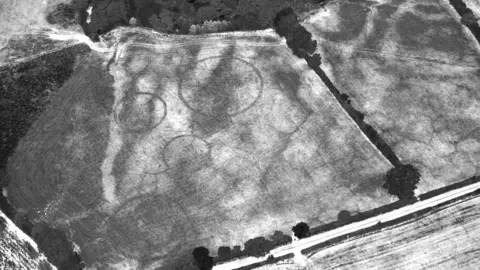 RCAHMW
RCAHMW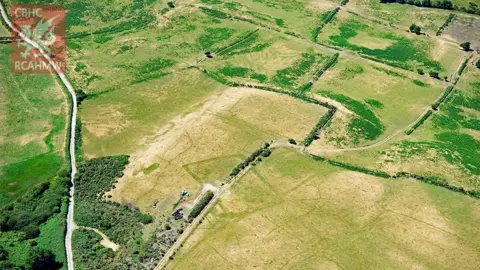 RCAHMW
RCAHMWCrop marks are made by vegetation drawing on better nutrients and water supplies trapped in long-gone fortification ditches - leading to lush green growth that stands out.
"There is a lot of hidden information in the pictures," said Dr Driver who hopes experts will be able to carry out analysis on the site in 2019.
A suspected Roman marching camp - a fortification dug in a day by soldiers - has also been found near the Roman town of Caerwent in Monmouthshire - the second in the area.
Dr Driver said marching camps were clearly identifiable by their round edges.
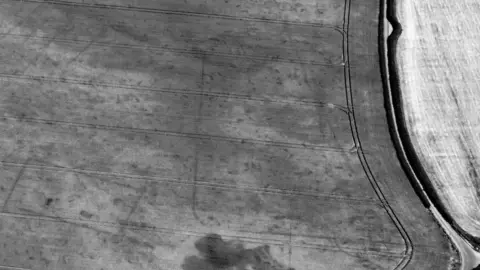 RCAHMW
RCAHMWHe said it could be an important site because the Romans spent a period on campaign before establishing themselves in an area, and the nearby town became one of its most important settlements in Wales.
Dr Driver, who has been carrying out aerial surveys for 20 years, said "this was the busiest summer" in years, although 2006 and 2013 also stand out.
The Royal Commission on the Ancient and Historical Monuments of Wales (RCAHMW) is to hold a series of talks about the new findings.
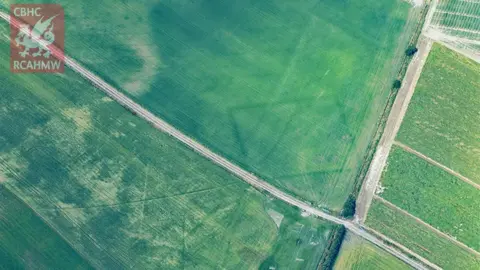 RCAHMW
RCAHMW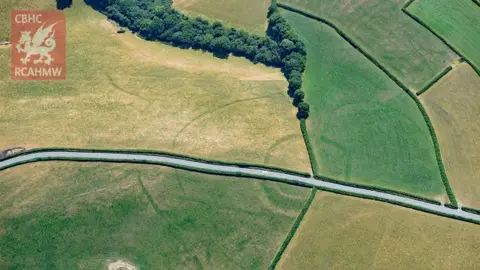 RCAHMW
RCAHMW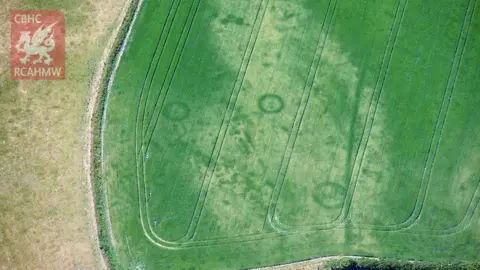 RCAHMW
RCAHMW